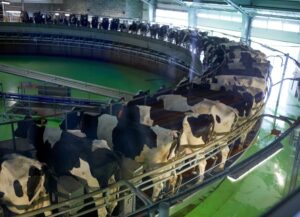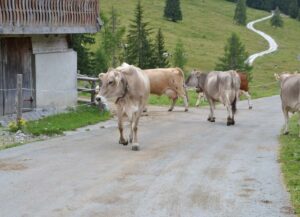Nuria Garcia
Mastitis remains one of the most important diseases in dairy cattle due to its negative consequences on animal welfare and productivity. Cases of clinical mastitis are generally treated without knowing the underlying cause of the disease, because current diagnostic tools are based on culture or PCR techniques, the results of which take at least one day.
More than 130 bacterial species have been associated with bovine mastitis, only 10 species or groups of species, however, are responsible for 95% of the infections. Most of these pathogens can be classified, into gram-positive (G+) or gram-negative (G-) bacteria depending on the characteristics of their cell wall. This differentiation is important to properly focus treatment, as infections caused by G- bacteria should not be treated with broad-spectrum antibiotics.
In the U.S., 40% of cases of clinical mastitis (CM) are attributed to G- bacteria, and between 10-40% of cases do not grow any pathogens when cultured in the laboratory. Considering that many producers treat most cases of CM with antibiotic therapy without knowing the causative pathogen, approximately 80% of the antibiotics used to treat mastitis in dairy cows are unnecessary.
Most field tests for mastitis are based on observed milk changes (sodium and chlorine ion concentrations, somatic cell counts, tissue damage-related enzymes, etc.). In addition, there are several dairy production parameters (daily milk production and components) and animal activity (rest time) that may vary in the days leading up to the visual detection of a CM case, while they remain stable in healthy cows.
The severity of mastitis is related to the causing pathogen, as G- bacterial infections often induce a more intense inflammatory response, while many G+ pathogens tend to cause a milder or later inflammatory response. These differences are more likely reflected in milk production, milk composition and cow behavior parameters in the period prior to the clinical presentation of the mastitis.
A study, published in the Journal of Dairy Science (Steele et al., 2020), was conducted with the goal of assessing whether temporary changes in these parameters in individual cows could be indicator of a case of CM classified by pathogen type (G-, G+ or without isolated pathogen -NP-), compared to all cases of clustered mastitis (CMA).
A combination of dairy and physical activity parameters of cows was used to develop separate multiple regression models and identify cases of CMA, G-, G+ or NP.
The researchers developed algorithms to predict each of these types of infection. Production and activity data were collated for the 14 days prior to an event of CM (n x 170) and for controls (n s 166), matched by breed, parity, and days in milk (DIM).
A case of CM was defined as that of a cow with an infection in one quarter (abnormal milk with clots, with or without redness and swelling of the mammary gland) identified by the milking staff trained for it.
At the beginning of a case of CM, the cow should be between 15 and 291 DIM and show no clinical signs for at least 14 days prior to detection. Only data from the first case of mastitis per lactation and cow were included. The control animals were defined as cows with no visible signs of mastitis in that lactation and were assigned retrospectively to each case.
Once a cow was considered a case of CM, she was no longer a control animal for the rest of that lactation. A single cow could be used as a control for multiple cases.
Milk composition (percentage of protein, fat and lactose), SCC, milk production and electrical conductivity were determined individually in each milking. Physical activity data (rest episodes and their duration, and total rest time) of cows were collected using pedometers.
Importance of dairy and physical activity parameters
The results showed that the individual dairy and physical activity parameters measured in the test were important for categorizing the type of infection (G-, G+, and NPI), but were not significant for CMA.
The use of these measurements in multiple regression models demonstrated better model performance for G+ and NP categorized cases of clinical mastitis, compared to CMA, although the performance of the G- model was like the performance of the CMA model.
Sensitivity was higher to detect G- when the reference point was closer to the day of diagnosis (day-3), while it was higher to detect G+ and NP when data up to 10 days before clinical diagnosis were included.
According to these results, changes in production and behavior of cows preceding a case of clinical mastitis differ for G-, G+ and NP cases, so this data collected on the farm could be useful as an additional detection tool for cows with clinical mastitis.
Reference
Steele NM, Dicke A, De Vries A, Lacy-Hulbert SJ, Liebe D, White RR, Petersson-Wolf CS. 2020. Identifying gram-negative and gram-positive clinical mastitis using daily milk component and behavioral sensor data. J. Dairy Sci. 103:2602–2614.
© 2020 Dairy Research Review. All Rights Reserved.









